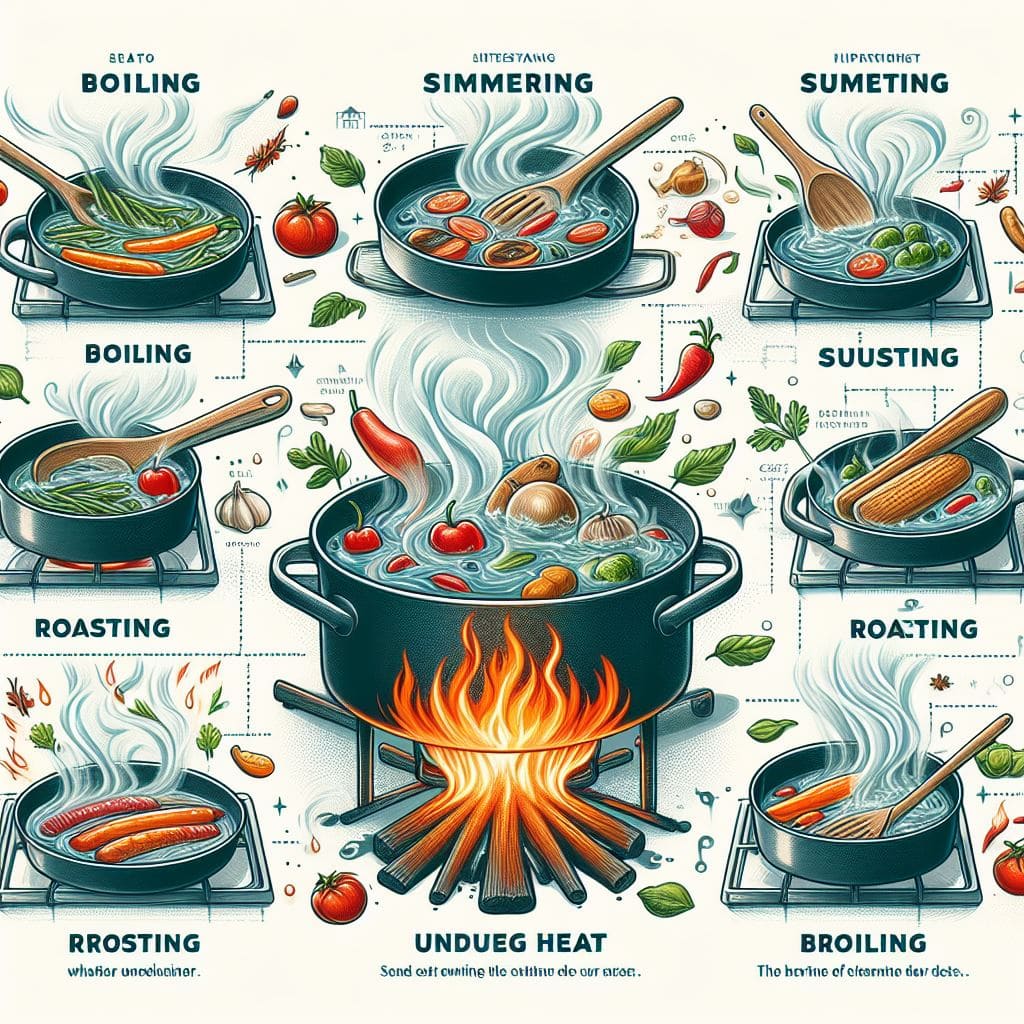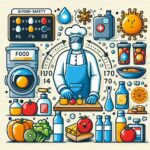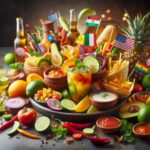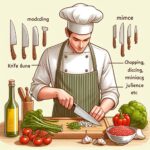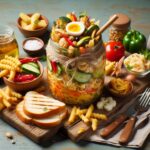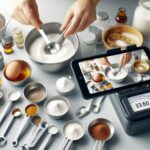Understanding heat in cooking involves various techniques like boiling, simmering, sautéing, roasting, and broiling, each dictating temperature and method. These techniques affect food texture, flavor, and doneness.
Cooking at high temperatures, roasting and broiling create a flavorful crust through the Maillard reaction, while slower cooks like simmering allow for gentle and even tenderizing of ingredients. Boiling is straightforward, consisting of cooking food in water at 212°F (100°C), ideal for pasta or vegetables.
Simmering, a notch below boiling, is best for soups and stews, as it coaxes flavors without causing disintegration. Sautéing enlists a hot pan and a bit of oil for a quick cook, offering color and texture to meats and veggies. Lastly, mastering these heat techniques enhances culinary skills, providing an arsenal for any dish you intend to create.

The Basics Of Cooking With Heat
Cooking is both an art and a science, where heat plays the starring role. Think of your kitchen as a laboratory. Here, heat transforms ingredients into delicious meals. To master cooking, you must understand how different cooking methods use heat. Let’s explore the basics of boiling, simmering, sautéing, roasting, and broiling.
Understanding Temperature And Heat Transfer
Heat moves in three ways: conduction, convection, and radiation. Each cooking method uses these differently.
- Conduction: Heat moves directly from a hot pan to food.
- Convection: Heat circulates through liquids and gases, evenly cooking the food.
- Radiation: Heat comes from a source like an oven’s coils. It cooks food without direct contact.
Knowing this helps you control the cooking process better.
The Role Of Heat In Cooking
Heat changes food in many ways:
- Texture: Softens fibres.
- Flavour: Develops new tastes.
- Color: Browns meats and toasts spices.
- Safety: Kills harmful germs.
Different dishes need different heat levels. A gentle simmer won’t brown meat. High heat will turn tomatoes into sauce quickly.
Factors Affecting Cooking Temperature
Several factors influence cooking temperatures:
| Factor | Effect on Cooking |
|---|---|
| Size of food | Smaller pieces cook faster. |
| Cookware material | Cast iron retains more heat than aluminum. |
| Starting temperature | Room-temp meat cooks more evenly than cold. |
| Altitude | High altitudes can lower boiling points. |
Adjust the heat based on these. Use a thermometer for accuracy.
Wet Heat Cooking Methods
Wet Heat Cooking Methods are essential for any aspiring chef or home cook. They involve water or water-based liquids like broth and milk. These techniques tenderize foods, infuse them with flavors, and prevent them from drying out. Let’s dive into the world of wet cooking methods, revealing how they can transform your kitchen routine.
Boiling: When And How To Use It
Boiling is cooking food in liquid at 212°F (100°C). This technique is quick and easy. It works best for pasta, eggs, and vegetables. Here are steps to boil food effectively:
- Fill a pot with enough water to cover the food.
- Add salt to enhance flavor and reduce cooking time.
- Cover the pot to reach boiling point faster.
- Add food only after the water boils.
- Reduce heat if the water starts to boil over.
Simmering: Techniques And Tips For Gentle Cooking
Simmering is gentler than boiling. The liquid barely bubbles at 180°F – 205°F (82°C – 96°C). It is perfect for soups, stews, and sauces. Here’s how to simmer like a pro:
- Use a low heat setting to maintain a steady simmer.
- Do not cover the pot fully to allow some steam to escape.
- Stir occasionally to prevent sticking and burning.
- Monitor the heat, maintaining a constant temperature.
Steaming: Locking In Flavor And Nutrients
Steaming uses steam from boiling water to cook food, keeping its nutrients and flavors intact. It’s ideal for fish, rice, and vegetables. Follow these points for successful steaming:
- Fill the base of the steamer with water, but make sure it doesn’t touch the food.
- Bring water to a boil before placing the food in the steamer.
- Cover the steamer to keep the steam from escaping.
- Check water levels to ensure they’re consistent during cooking.
Dry Heat Cooking Methods
Unlock the essences of flavor with dry heat cooking methods. This technique transforms simple ingredients into culinary marvels. Exploring these methods reveals the nuanced dance of heat with food.
Sautéing: Quick Cooking On The Stovetop
Sautéing is a rapid method that heats ingredients quickly. It involves minimal oil and high heat. Pieces of food are tossed over a stove in a shallow pan. This ensures each morsel sears evenly, locking in flavor and texture. Perfect for vegetables and delicate meats, sautéing is ideal for a busy lifestyle.
Roasting: The Art Of Oven-cooked Succulence
Roasting is a slow, even heat technique that coaxes out deep, complex flavors. It usually happens in an oven. Your favorite meats and vegetables caramelize and brown, offering a rich, robust taste. Uniform temperature is key for this method, turning ordinary dishes into succulent feasts.
Broiling: High-heat For Fast Finishing
Think of broiling as an upside-down grill. This method uses direct, high heat from above inside your oven. It’s perfect for quickly charring or finishing off a dish with a crisp top. Broiling demands constant attention to prevent burning. Yet, it rewards you with a delightful color and taste.
Grilling: Infusing Smokiness And Char
Grilling brings the heat from below. This well-loved method imparts a smoky flavor and an irresistible char. Grilling can be done outdoors or indoors with a grill pan. Ideal for meats, veggies, and perfect grill marks, this method epitomizes summer cooking but delights year-round.
Combination Cooking Methods
Combination Cooking Methods blend two or more techniques to transform simple ingredients into extraordinary meals. Understanding these methods opens up a world of culinary adventures, ensuring dishes are cooked perfectly from the inside out. Let’s dive into the nurturing world of slow cooking with braising and stewing, two pillars of the combination cooking realm.
Braising: Slow-cooked Tenderness
Braising combines dry and wet heats, enveloping meats and vegetables in a world of flavor. First, ingredients are seared to golden perfection. Next, they bathe in liquid, usually a flavorful stock or wine, at a low temperature for hours.
- Ingredients: High, even heat browns the surface, sealing in juices.
- Liquid: Braising relies on a mix of broths, wines, or even beer.
- Time: Patience is key, with cooking times that can span several hours.
- Result: The outcome is tender, pull-apart meats and full-bodied flavors.
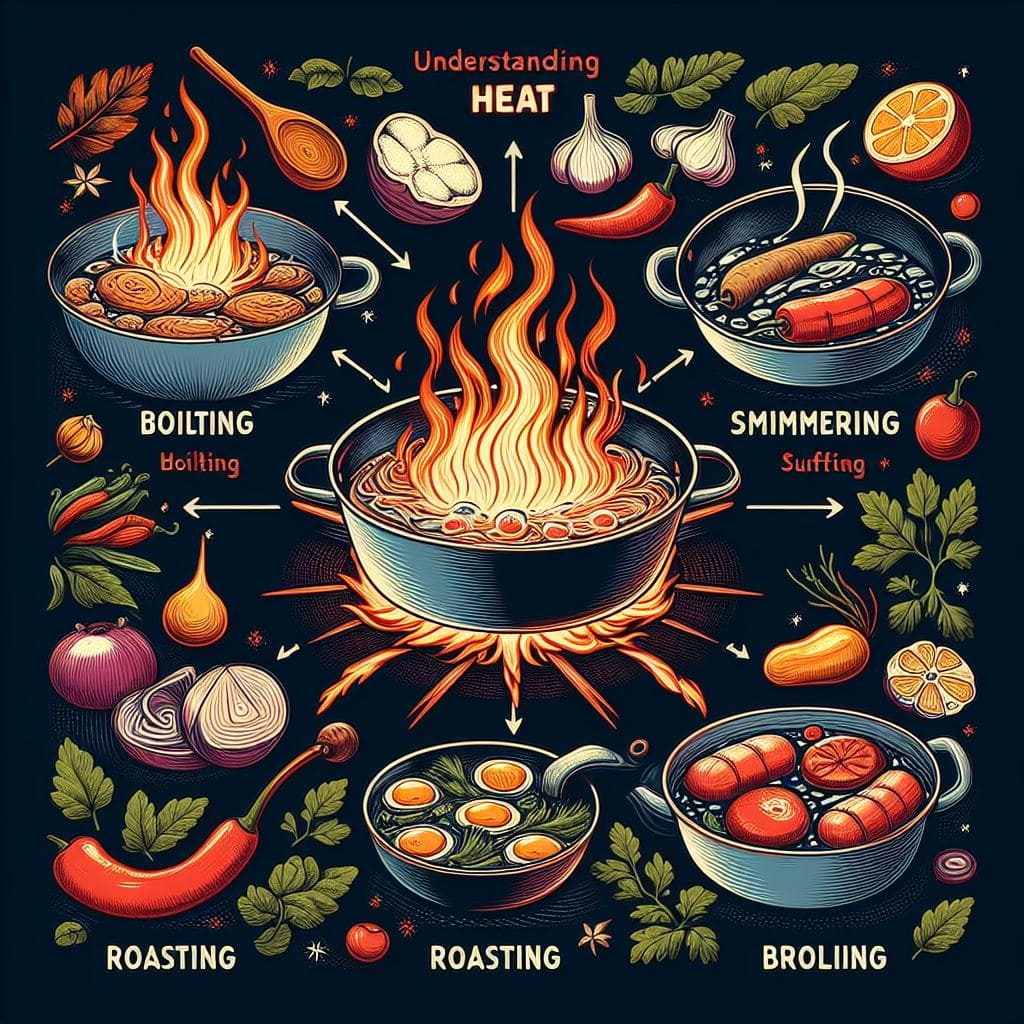
Stewing: Comfort In A Pot
Stewing, much like braising, begins with browning but uses smaller, uniform pieces of meat and vegetables. Submerged in less liquid than braising, it becomes a hearty, all-in-one meal simmering slowly. Picture chunks of beef, tender potatoes, and carrots soaking in a rich sauce.
| Size of Ingredients | Amount of Liquid | Cooking Vessel |
|---|---|---|
| Small, consistent pieces ensure even cooking. | Enough to cover the ingredients partially. | Thick pots retain heat and prevent burning. |
Culinary Techniques For Perfect Heat Application
Unleashing the true flavors of your favorite meals hinges on one essential skillset: knowing how to apply heat perfectly. Whether you’re boiling pasta, simmering sauce, sautéing vegetables, roasting a chicken, or broiling a steak, each method requires its specific touch of thermal magic. Let’s embark on a culinary exploration to master the art of thermal techniques.
Adjusting Heat Levels For Different Foods
Different dishes demand unique heat levels for that ideal cook. Understanding the temperatures that best suit various foods is crucial. For instance:
- Chocolate melts at low heat,
- Vegetables are vibrant when they’re flash-cooked,
- Steaks need high heat for the perfect sear.
Task number one is matching heat levels to the food on your menu.
Timing: Key To Avoiding Overcooking Or Undercooking
Timing intertwines with heat to forge the destiny of your dish. A minute too long and your food may overcook; too short and it’s undercooked. Below is a handy timing guide:
| Method | Timing |
|---|---|
| Boiling Pasta | 8-12 minutes |
| Roasting Chicken | 20 minutes per pound |
| Sautéing Onions | 5-8 minutes |
Keep an eye on the clock, and let timing be your guide.
Tools Of The Trade: Cookware And Thermometers
The right tools make all the difference in the culinary world. Here’s what you’ll need:
- A heavy-duty skillet spreads heat evenly,
- A nonstick pan is ideal for delicate eggs,
- A cast-iron pot retains heat for slow cooking.
Don’t forget a trusty thermometer — it’s your secret to serving food safe and sound, cooked to perfection.

Conclusion
Exploring the various cooking techniques, from boiling to broiling, enriches your culinary journey. Mastering each method elevates flavors and textures in your dishes. Embrace these skills to transform simple ingredients into extraordinary meals. Let your kitchen adventures lead to delicious discoveries, one technique at a time.
Happy cooking!
Frequently Asked Questions On Understanding Heat: Boiling, Simmering, Sautéing, Roasting, Broiling, Etc.
What Are The 5 Steps Of Cooking Method?
The five steps of the cooking method include prepping ingredients, heating the cookware, cooking the food, monitoring for doneness, and resting before serving.
What Are The 5 Methods Of Food Preparation?
The five methods of food preparation include grilling, baking, boiling, frying, and steaming. Each technique uses heat to make food safe and palatable.
What Are The Five 5 Cooking Methods Used For Preparing Meat?
The five basic cooking methods for meat are grilling, roasting, broiling, pan-frying, and boiling. Each technique brings out distinct flavors and textures.
What Are The Six Basic Cooking Techniques?
The six basic cooking techniques are grilling, boiling, frying, sautéing, roasting, and baking. These methods form the foundation for most culinary preparations.

